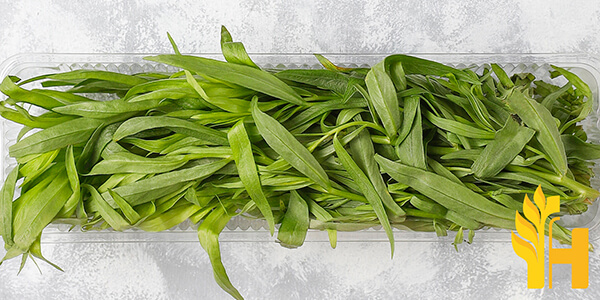Tarragon price

Where to buy and sell Tarragon, lowest (cheapest) and highest price.
check offers buy sell TarragonToday price for TarragonTarragon wholesale prices 2022
The Current commodity price of Tarragon per kg, pound in the world in the global markets
Tarragon
Tarragon, also called estragon or dragon herb, is an aromatic Eurasian plant in the sunflower family. It is a highly aromatic and flavorful culinary herb used in traditional dishes of France and other Mediterranean countries. Both the leaves and root are edible and it is frequently added to soups and stews, as well as meat and egg dishes. Tarragon has a distinctive sweet aniseed flavor, which complements fish and chicken dishes, soups, cream sauces, egg noodles, stews, and mild-tasting vegetables. Tarragon is one of the four fine herbs of French cooking, along with chervil, chives, and parsley. There are numerous cultivars of tarragon, most notably Russian tarragon, but also French. The two are similar in appearance and flavor (though not in composition), but the Russian variety is hardier and grows better than the French in some locales. Tarragon has a strong flavor that works well with strongly flavored ingredients such as mustard, goat cheese, garlic, and rich meats such as lamb. Tarragon has a unique flavor that complements fatty foods such as pork, turkey, duck, and olive oil. It is delicious with eggs and cream sauces. There is a common claim that tarragon is not a medicinal herb. False. Tarragon has been used as a medicinal plant at various times throughout history. In the Middle Ages, it was considered to be both an appetite stimulant and remedy for indigestion and gas pains. In 1597, herbalist John Gerard recommended that it be used to treat toothaches. There are three main varieties of tarragon, Russian, French, and Mexican. Most culinary use is on the leaves of Tarragona dracunculus var. dracunculus (Russian variety). The chemical constituents of the essential oil include estragole and ethanol. Ethanol also being present in the roots. The European Medicines Agency (EMA) has completed a scientific assessment report on tarragon herb. The EMA concluded that there is no evidence for tarragon to treat or prevent any disease, and it should not be prescribed as medicine. Unfortunately, this means anyone claiming tarragon can treat or cure a disease is, at best, practicing medicine without a license. However, the EMA also concluded that because tarragon does not appear to have any negative side effects when taken by healthy adults it can be sold as "tia tia" tea, presumably for novelty purposes only. On this basis, we decided to investigate whether or not there is any scientific basis for the claimed health benefits of tarragon tea. As tarragon has been consumed as both traditional medicine and for its alleged food / nutritional properties, there may be some evidence to support these claims.Global tarragon production
Tarragon is a perennial herb that is native to central and eastern Europe. It is also found in North Africa and western Asia. The plant has been introduced to other parts of the world, including North America, where it is now widely cultivated. Tarragon is used both fresh and dried in cooking. It has a distinctive anise-like flavor and is used to season poultry, fish, and vegetables. It is also a popular ingredient in many sauces, such as hollandaise and bearnaise. Global production of tarragon was estimated at 1,000 tonnes in 2013. The majority of this production comes from France, where the herb is used extensively in cuisine. Other major producers include Morocco, Turkey, and Russia. Tarragon is an important herb in many cuisines around the world. In France, it is one of the four essential herbs used in the classic sauce known as fines herbes. It is also widely used in Russian cuisine, where it is often added to stews and soups. In Morocco, tarragon is used to flavor many dishes, including chicken tagine.Download our new
Husfarm App
Stay up to date with the current prieces of agricultural products all over the world.
Do you want to sell agricultural products?
Are you an Agricultural processor looking for high-quality products to buy?
Post an ad for FREE!
